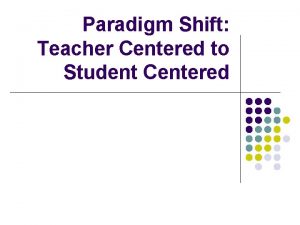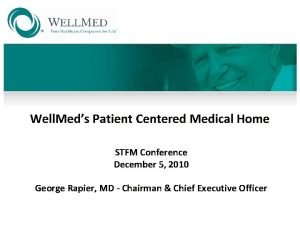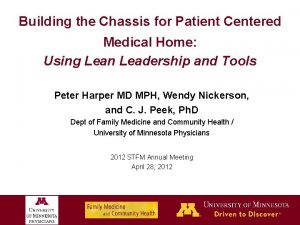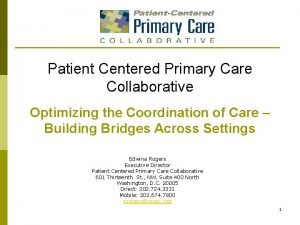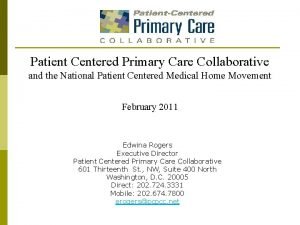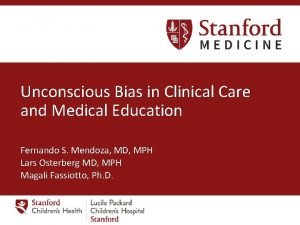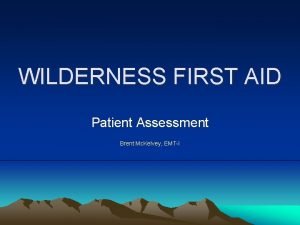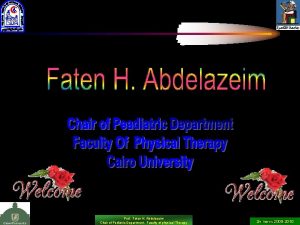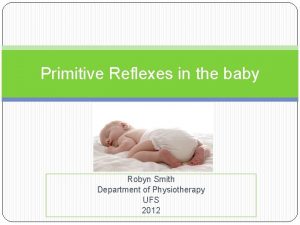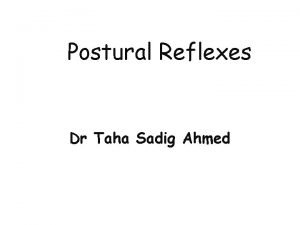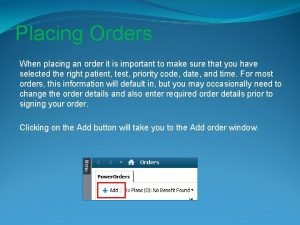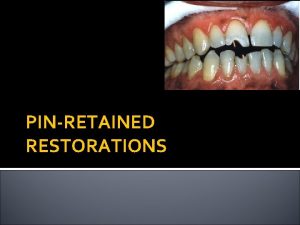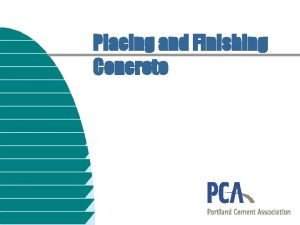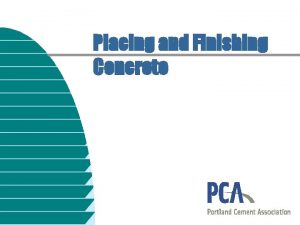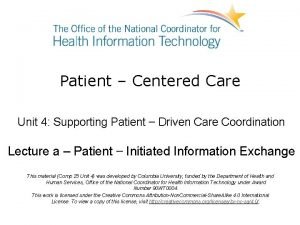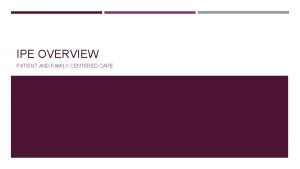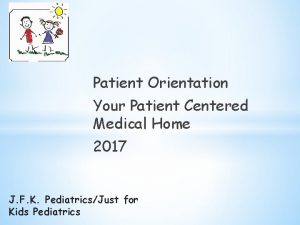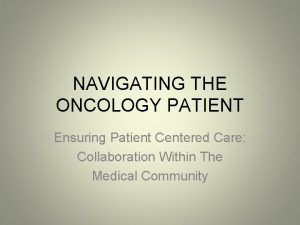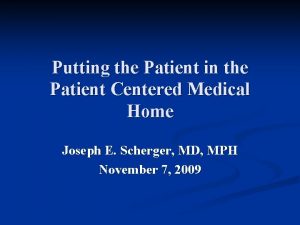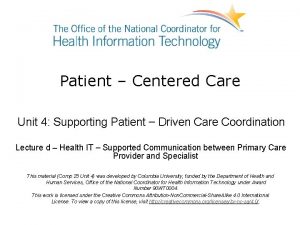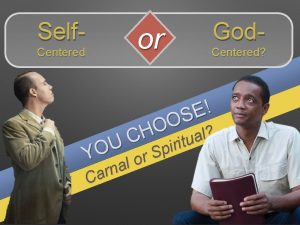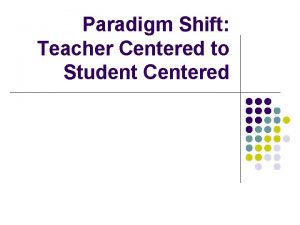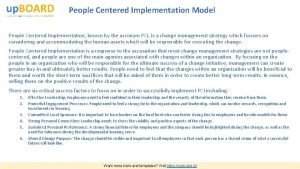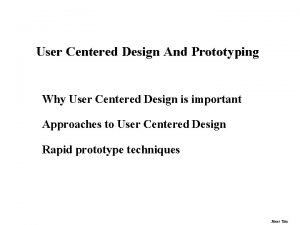PLACING PATIENTS FIRST 3 YEARS OF PATIENT CENTERED




















- Slides: 20

PLACING PATIENTS FIRST: 3 YEARS OF PATIENT CENTERED CARE CONFERENCES Christina Kulp, LCSW, ACHPSW

PRESENTER BIO Christina is a Master’s level graduate of Marywood University School of Social Work and has worked in the geriatric, non-profit and healthcare fields for over 18 years. She is licensed as a Clinical Social Worker in the state of PA. Christina also has post-graduate certificates in Gerontology, and Palliative/End of Life Care. She is specialty certified in Advanced Hospice and Palliative Social Work through NASW. She has an ongoing interest in quality/process improvement, education and program development. She was deeply involved in the development of the award-winning OACIS service in the Lehigh Valley Health Network. She is firm believer in a team approach to palliative and end of life care which provides the best possible services to patients and their loved ones. Christina enjoys providing supervision to student social workers as it provides a fresh view to the discipline through new eyes. Christina has presented in National and State conferences as well as being a guest speaker at several colleges. Past work history includes case management, dialysis social work, counseling (individual and group), psychiatric evaluation services, and social service director at a local skilled nursing facility. Areas of expertise include conflict resolution, counseling, case management, insurance, field education and group facilitation.

PATIENT CENTERED CARE Definition: Providing care that is respectful of, and responsive to, individual patient preferences, needs and values, and ensuring that patient values guide all clinical decisions (IOM, 2001). • Picker’s Eight Principles of Patient Centered Care • Listed as one of the 10 components in NHPCO’s Quality of Care

THE PROBLEM • Clinical reviews demonstrate a poor understanding of patient preferences by caregivers • Prior studies in end-of-life care have focused on specific outcomes deemed important from the providers perspective • Some studies rely on caregivers report of patient preferences • Patient preferences can only be met by receiving care consistent with their goals

BARRIERS • Clinicians do not consistently address patient concerns • Clinicians do not always access patients beliefs/understanding of their illness • Clinicians do not always share management options with their patients • Patients frequently fail to recall basic elements of their care plan • Increasingly complex care held across a variety of settings

OUR PREVIOUS REALITY AKA “THE BEFORE” • Weekly Interdisciplinary (IDT) on the inpatient unit – every two weeks for home patients • Many patients already died • Multiple disciplines meeting with patient = multiple different stories • Fractured knowledge of patient and family expressed goals • Communication not always consistent even with electronic record

SUCCESSFUL CARE PLANNING • Increase frequency of IDT meeting-like communication • Go beyond shift to shift reports • Improve understanding and alignment of IDT members • Improve alignment of all participants in patient circle of care • Timely and meaningful communication

SHIFTING THE PARADIGM • Improve access to and continuity with clinicians • Increasing patient participation in care by encouraging them to express their concerns and to become actively involved in their design of care • Supporting patient self-management through systems that facilitate goal setting and increase patient/family self care • Establish more efficient and reliable mechanisms for coordinating care among settings

OUR CURRENT REALITY “THE NOW” • Specified meeting times • Pre-conference • Housekeeping • Patient Centered Conference • Post-conference

CHALLENGES • Overwhelming logistics to get everyone together “It’s like herding cats” • Struggles related to time management • Resistance due to perceived increase in time commitment and structure • Insecurities knowing others would observe performance • Creation of a culture that allows all to have an equal voice

WHAT WE LEARNED • Improved understanding of individual skills and roles on the team • Allows for group discussion of team concerns as well as patient concerns • Opportunity to support team members when personal struggles surface • Validation of each other • Learning from others by observing communication skills • Raised the bar on collective and individual performance

WHAT WE LEARNED (CONTINUED) • Allowed for transition from multidisciplinary to interdisciplinary • Benefits far outweigh the challenges • Shared common knowledge, goals and purpose • Strengthened team bonds and cohesiveness • Hand-off communication improved

TAKING THE SHOW ON THE ROAD • Adjustments for providing patient centered care conferences in the home • Who would best benefit? • Barriers due to home related care • Unintended Benefits • Feedback from staff, patients and families

ADJUSTING TO THE HOME SETTING • Case manager is responsible for input of physician/physician extender as physician will be unable to attend • Social worker will need to coordinate with schedulers regarding home health aid availability and other involved disciplines (massage therapist, spiritual counseling, volunteers) • Location of pre and post conference (parking lot, hospice office, virtual call) • Anticipating education materials and other needs

IDENTIFYING CASES • Triggers and scoring system • • Informal caregivers Substance Abuse/Diversion/Mental Health Sudden illness/Complex Grief Family conflict/Incongruent expectations • Timing - start, middle or towards the end • Family request

BARRIERS • Some patient homes unable to accommodate entire team at once • Coordination of schedules for team members • Team members not available for other patients during care conference • Lack of private place to pre and post conference • Physician and Physician extenders unavailable

UNINTENDED BENEFITS • Increased communication • Enhanced development of team • Improved staff retention • Power of debriefing • Perceived decrease in “crisis” events

FEEDBACK • Patients/Caregivers/Loved Ones • • • Increased sense of value due to time taken Don’t have to repeat their story Improved understanding of family member roles • • • Family and patient have better understanding of care being provided Voice of patient and family is heard Entire team delivers the same message to patient and loved ones decreasing confusion • Staff • Surveys

QUESTIONS?

REFERENCES • Institute of Medicine. 2001. Crossing the Quality Chasm: A New Health System for the 21 st Century. Washington, DC: The National Academies Press. https: //doi. org/10. 17226/10027. • NHPCO Website. 10 Components of Quality Care. https: //www. nhpco. org/quality/10 -components-quality-care • Picker Institute. Picker’s Eight Principles of Patient Centered Care. http: //cgp. pickerinstitute. org/? page_id=1319
 Stock image
Stock image Patient centered medical home conference
Patient centered medical home conference Qsen safety competencies examples
Qsen safety competencies examples Patient centered medical home
Patient centered medical home Patient centered primary care collaborative
Patient centered primary care collaborative Patient centered care collaborative
Patient centered care collaborative Patient centered care
Patient centered care Goat years to human years
Goat years to human years 300 solar years to lunar years
300 solar years to lunar years Where is this image
Where is this image Patient 2 patient
Patient 2 patient First sad memory of jose rizal
First sad memory of jose rizal First years
First years First aid patient assessment
First aid patient assessment Sucking reflex disappear
Sucking reflex disappear パラシュート反射
パラシュート反射 What is righting reflex
What is righting reflex Periapical x ray
Periapical x ray Placing the order
Placing the order Pin restoration
Pin restoration When placing solid web members for beams/columns
When placing solid web members for beams/columns
